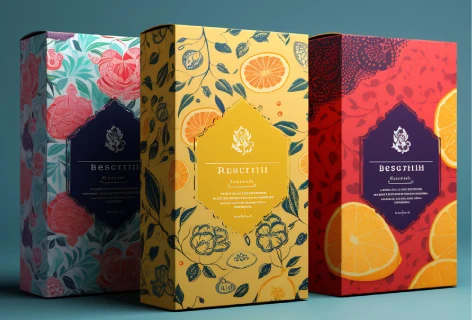How to Choose the Right Paper Stock for Product Packaging: A Comprehensive Guide

The choice of materials plays a crucial role in determining the visual appeal, durability, and sustainability of custom-printed packaging. From paper and cardboard options to plastics and eco-friendly alternatives, numerous substrate materials are readily available to meet any specific packaging design requirements.
This article covers paper-based material options that are specifically designed for manufacturing packaging. We will examine the unique characteristics, diverse applications, and environmental implications of using commonly used paper and card types.
Options for Card Stocks:
Folding Carton Board: Folding carton board is a lightweight yet sturdy paperboard primarily used for manufacturing comparatively smaller-sized folding cartons and packaging inserts. This type of paper board is commonly used in the food, cosmetics, and pharmaceutical industries due to its strength, printability, and versatility. Carton board is available in different grades and thicknesses to suit various packaging needs.

Kraft Card: Kraft Card is a strong, brown-colored paper board commonly used for packaging applications such as boxes and shopping bags. It is made from unbleached wood pulp and is known for its durability, tear resistance, and rustic appearance. Kraft paper is considered an eco-friendly option and is often used for packaging products with a natural or artisanal aesthetic. Boxes made from kraft cardstock are widely used in different industries including cosmetics and electronics as a sustainable packaging solution.

Specialty Paper Board: The term specialty paper board refers to specific types of paper with unique characteristics and applications such as metalized paper for luxury packaging, vellum paper for translucent effects, and textured paper for added visual interest. Specialty paper board is often used for high-end printing and packaging applications that require a distinctive look and feel.

Corrugated Cardboard: Often simply referred to as ‘corrugation’, corrugated cardboard is a versatile and widely used material option for manufacturing various types of packaging. Corrugated cardboard consists of three layers: an inner layer called the ‘fluting’ sandwiched between two outer layers known as ‘liners’. This unique structure provides corrugated packaging with strength, durability, and cushioning properties, making it ideal for protecting a wide range of products during storage, transportation, and handling.

White vs Kraft Card Stock:
Printing on white cardstock generally results in more vibrant colors and higher contrast due to its bright surface and smooth texture. The ink sits on the surface, providing sharp and precise print results. In contrast, printing on kraft cardstock yields softer colors with lower contrast, as its natural brown color and rough texture affect ink absorption and distribution. While white cardstock is suitable for a clean and professional look, kraft cardstock offers a rustic and organic aesthetic, ideal for projects aiming for a natural or vintage-inspired appearance. Considering the desired color vibrancy, contrast, and overall aesthetic when choosing between the two options for printing is essential in obtaining the specific outcome that best represents brand esthetics.

Environmental and Sustainability Considerations:
When selecting printing materials, it is crucial to prioritize environmental considerations. Opting for sustainably sourced materials, such as those certified by the Forest Stewardship Council (FSC) or the Program for the Endorsement of Forest Certification (PEFC), ensures responsible forest management practices. Additionally, choosing papers with high post-consumer recycled content reduces the demand for virgin materials and minimizes waste. Biodegradable and compostable options further contribute to environmental sustainability by breaking down naturally without leaving harmful residues. By adopting waste reduction strategies, prioritizing packaging suppliers committed to energy-efficient and chemical-free manufacturing processes, and conducting life cycle sustainability assessments, product manufacturers and retailers can make informed product packaging decisions that align with their sustainability goals.
In conclusion, understanding the characteristics and applications of various material options is crucial in creating effective product packaging solutions. By considering environmental considerations and aligning with your brand values, you can make informed decisions that meet customer expectations and help ensure financial success for your business.


